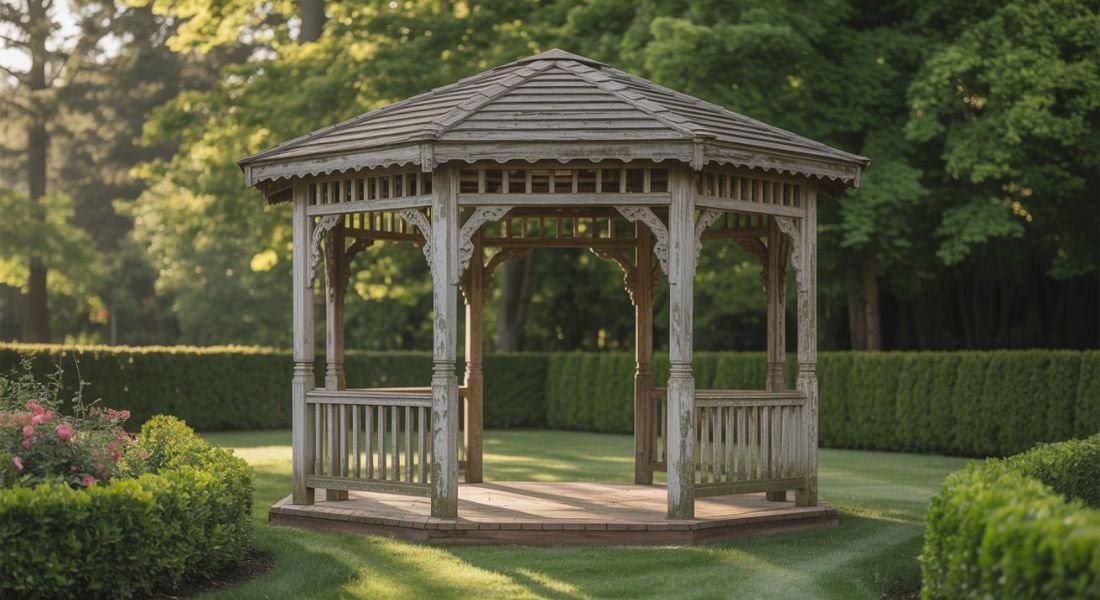Creating durable outdoor structures needs careful consideration of material quality, especially given the challenging conditions these installations must withstand. With extreme weather events affecting 75.2% of UK construction projects and causing financial impacts, choosing superior materials has become essential for long-term project success. Quality materials guarantee structural integrity and deliver substantial cost savings, improving aesthetics and environmental benefits over time.
- Enhanced Durability and Longevity
High-quality materials show superior resistance to the diverse environmental challenges faced by outdoor structures across the UK. Galvanised steel components prevent rust and corrosion, whilst treated timber resists rot and insect damage, extending structural lifespan. The UK’s variable climate, with increasing frequency of extreme weather events, demands materials capable of withstanding temperature fluctuations, heavy rainfall, and strong winds without compromising structural integrity. Modern outdoor structures built with premium materials can last 25-30 years compared to 10-15 years for those constructed with standard alternatives. This improved durability becomes particularly important for foundation elements. And so, using high-quality fence post spikes guarantees secure and stable installation, preventing shifting and increasing overall structural longevity.
- Cost-Effectiveness Over Time
Although premium materials need a higher initial investment, their superior durability typically results in a lower total cost of ownership. UK construction costs increased by 1.9% in 2024, making material selection important for budget management. Quality materials reduce repair frequency, minimise replacement requirements, and decrease maintenance labour costs significantly. Garden construction projects in the UK now average £11,500 to £18,500, with maintenance costs ranging from £30 to £100 per hour for professional services. When investing in superior materials initially, property owners can lower these ongoing expenses substantially. Premium materials often include warranties and guarantees that provide additional financial protection, whilst their enhanced performance reduces the likelihood of premature failures that can prove costly to rectify.
- Improved Aesthetic Appeal
Superior materials consistently deliver better visual impact and maintain their appearance longer than lower-quality alternatives. Natural stone, high-grade timber, and premium metals develop attractive patinas over time instead of showing signs of deterioration. This aesthetic longevity is particularly valuable for commercial properties and residential developments where visual appeal directly influences property values. Quality materials have greater consistency in colour, texture, and finish, guaranteeing professional-looking results that complement surrounding landscapes. The improved workability of premium materials also allows for more precise installation and finishing, resulting in structures that appear more refined and professionally constructed.
- Environmental Sustainability
Choosing eco-friendly materials supports environmental conservation whilst often delivering superior performance characteristics. Recycled composites, sustainably sourced timber, and materials with extended lifecycles lower environmental impact whilst providing excellent durability. The UK’s commitment to net zero by 2050 has increased demand for sustainable construction materials across all sectors. Modern sustainable materials often exceed traditional alternatives in durability and performance whilst lowering carbon footprints. Local sourcing of quality materials supports regional economies and reduces transportation-related emissions. Additionally, materials designed for longevity reduce waste generation and resource consumption over time, aligning with circular economy principles and environmental stewardship goals. Material quality determines outdoor structure performance, longevity, and overall value. When prioritising superior materials, property owners secure long-term benefits that far outweigh initial cost considerations, making sure that structures withstand environmental challenges whilst maintaining aesthetic appeal and environmental responsibility.









